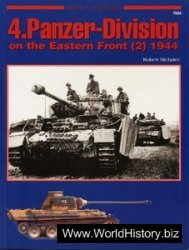Outside the academy, the influence of antiquity was still to be seen. Architecture in the North had become increasingly the grand domed style of the Roman Empire. The beaux-arts buildings of the World’s Columbian Exposition in Chicago (1893) began a trend in which government buildings were based on Roman imperial models, and Penn Station in New York (1910) mimicked the Baths of Caracalla. In the twentieth century, the International Style of Le Corbusier and Van Der Rohe used elements of classical simplicity and efficiency, while postmodern architecture in the 1970s simply chose decorative features (e. g., the Roman arch and Chippendale top of Philip Johnson’s 1984 AT&T [now Sony] Building in New York). The arrival of Carl Jung in America in 1930 with his views on tribal myth and the artist as shaman transmitting great truths to the populace was crucial to the intellectual background of the Surrealists and Abstract Expressionists like Mark Rothko and Adolph Gottlieb (Oedipus as the blind seer), who would use classical myths to interpret the tragedy of World War II. Great classical nudes were the basis for Gaston Lachaise.
With classics at the heart of the curriculum, it is no surprise that its myths, history, and authors should be a feature of American literature. Just as the first work of Roman literature is a translation (Livius Andronicus’ translation of the Odyssey), so the first work of American literature is a translation, George Sandys’ (1578-1644) rendering of Ovid’s Metamorphoses (1621-6). Sandys, called by Dryden ‘‘the best Versifier of the former age’’ (Dryden 1962b: 521), crossed the Atlantic in 1621 as an official with the Virginia Company; his translation was a source of mythological tales for Keats, among others. So pervasive were the classical models in the Colonial Period that not only did Captain John Smith and Cotton Mather employ reminiscences of the Aeneid, but even slaves like Phyllis Wheatley (‘‘Maecenas’’) and Jupiter Ammon used classical elements in their poetry. By the end of the nineteenth century, many Americans were versed in the stories in Thomas Bulfinch’s Age of Fable (1855), just as many in the twentieth century (notably Robert Kennedy) would be introduced to mythology by Edith Hamilton’s Mythology (1942). Of all classical stories, that of Aeneas has held the longest sway (Shields 2001). Vergilian echoes continued from the introduction to Joel Barlow’s Columbiad (1807) (‘‘I sing the Mariner who first unfurl’d / An eastern banner o’er the western world’’) into the twentieth century: Willa Cather drew heavily on the Georgics in My Antonia (1918) (Ryder 1990), as Fitzgerald did for the ending of The Great Gatsby (1925). Vergil also structured Allen Tate’s ‘‘Aeneas at New York’’ and ‘‘Aeneas at Washington’’ and Robert Lowell’s ‘‘Falling Asleep Over the Aeneid.’ Just as Thoreau in the nineteenth century had felt a special attraction for the Eclogues and Georgics, so in the twentieth century Robert Frost left his failed Vermont farm to join the English Georgic poets; half a century later his poem for John Kennedy’s inauguration, ‘‘The Gift Outright,’’ echoes Eclogue 4. In the South the Agrarians (Tate, John Crowe Ransom, Donald Davidson, Robert Penn Warren, and others) called for a return to southern regionalism and an agricultural economy, much on the order of Vergil’s poem.
It is impossible to do justice to all the American poets who have written on classical subjects. Thoreau recounted Whitman declaiming Homer from atop a Broadway bus, and Odysseus has inspired poetry by other Americans from Nathaniel Langdon Frothingham in 1859 through Madison Cawein to Maxwell Anderson, Joseph Aus-lander, John Peale Bishop, John Ciardi, Gregory Corso, Mark Van Doren, Horace Gregory, Robert Lowell, Archibald Macleish, Edgar Lee Masters, W. S. Merwin, Richard Wilbur, and, perhaps most brilliantly of all, Louise Gluck in Meadowlands (1996). Helen of Troy has attracted poets as different as Stephen Vincent Benet, Bishop, Hart Crane, Edgar Fawcett, Anne Adams Fields, John Gould Fletcher, Masters, Edgar Allan Poe, Laura Riding, George Santayana, and Sara Teasdale. The loves of Sappho have appealed to poets beginning with Philip Freneau at the end of the eighteenth century (‘‘The Monument of Phaon'') and continuing in the next century with William Wetmore Story, Cale Young Rice, and William Alexander Percy. Sappho has also, ofcourse, attracted female poets, beginning with Elizabeth Akers in the nineteenth century, followed by Zoe Akins, Teasdale, Edna St. Vincent Millay, and notably H. D., whose connection with Hellenism was especially deep and wide (Gregory). It is difficult to think of a nineteenth-century poet who did not tap a classical source, from Longfellow to James Russell Lowell to Bayard Taylor, in addition to hosts of now-forgotten poets of the same period whose subjects were almost exclusively classical (Boswell 1982).
In the twentieth century, virtually every major poet wrote on classical themes, including (in addition to those mentioned above) William Rose Benet, R. P. Blackmur,
Louise Bogan, Witter Bynner, James Dickey, Rolfe Humphries, William Meredith, Thomas Merton, Marianne Moore, Howard Nemerov, John Crowe Ransom, Kenneth Rexroth, Edward Arlington Robinson, Delmore Schwartz, and Karl Shapiro (Boswell).
T. S. Eliot, classically educated at Harvard, used Tiresias in The Waste Land, the Alcestis of Euripides was his model in The Cocktail Party, and he compared his Everyman Sweeney to Polyphemus. His influential address to the British Virgil Society, ‘‘What Is a Classic?’’ defined Aeneas at mid-century in conservative Christian terms. Ezra Pound ‘‘translated’’ Propertius and other classical authors. Conrad Aiken wrote ‘‘Medusa’’ and ‘‘Priapus and the Pool,’’ among others. Robinson Jeffers’ poem ‘‘Cawdor’’ draws on Euripides’ Hippolytus, The Tower beyond Tragedy is a version of the Oresteia, and ‘‘Solstice’’ reworks the Jason-Medea myth.
Some romance novels looked to the ancient world. The most notable is Hawthorne’s Marble Faun (1860), which involves American lovers in Rome and an Italian who resembles the faun of Praxiteles, embodies aspects of the Greek ideal, and is thrown to his death from the Tarpeian Rock. Moby-Dick has elements of the Europa, Arion, Damocles, and Prometheus myths.
The fine tradition of American historical novels set in antiquity began with Mor-decai M. Noah’s The Grecian Captive (1822) and John Howard Payne’s Oswaldi of Athens (1831). The great exemplar is Union General Lew Wallace’s Ben-Hur: A Tale of the Christ (1880). An Indianan, Wallace was skeptical of the wealthy new society of post-Civil War America. Packed with great period detail and setpieces like the chariot-race at Antioch and the naval battle that have made it a perennial Hollywood favorite, the novel depicts Rome as the new imperial America, in which the citizens retain many of the virtues of earlier generations amid the worship of power. The long line of American fiction based on the ancient world includes George Horton’s Like Another Helen (1901), John Erskine’s The Private Life of Helen of Troy (1925), Thornton Wilder’s The Woman of Andros (1930), Howard Fast’s Spartacus (1952), John Updike’s The Centaur (1963), and Gore Vidal’s Julian (1964).
FURTHER READING
The first study of American life to speak to the importance of the classical tradition is Samuel Miller’s A Brief Retrospect of the Eighteenth Century (1803), but American intellectual history was not seriously studied until the 1920s. Meyer Reinhold notes that in 1925 Carl Becker asked ‘‘Will not someone write a book showing how the revolutionary state of mind of the eighteenth century was also nourished on an ideal conception of classical republicanism and Roman virtue?’’ (Reinhold 1984: 284). Seventy years later, Becker’s wish was fully granted with the publication of Richard (1994), which is now the starting point for the study of classical influences on the Revolution. Richard encapsulates and supersedes much of Reinhold’s Classica Americana, a collection of his seminal articles on the subject, but much of Reinhold’s pathfinding work will always be of great value. Most surveys of the US classical tradition stop where Reinhold does, at the end of the ‘‘Silver Age’’ of the Classical Tradition, 1830, yet there is a rich vein still to be mined in the late nineteenth and early twentieth centuries. Howard Mumford Jones (1952, 1968, 1974) is the most frequent champion of the classical influence on American culture; Clement Eaton and Michael O’Brien (2004) have been particularly sensitive to classical influences in southern culture. Unfortunately Highet’s magisterial Classical Tradition (1949) barely glances at American literature. For poets, individual studies like Gregory (1997) must be consulted. A full history of American classical scholarship is still a desideratum; in the meantime, see Calder (1994).
A Companion to the Classical Tradition Edited by Craig W. Kallendorf Copyright © 2007 by Blackwell Publishing Ltd




 World History
World History




![United States Army in WWII - Europe - The Ardennes Battle of the Bulge [Illustrated Edition]](/uploads/posts/2015-05/1432563079_1428528748_0034497d_medium.jpeg)




